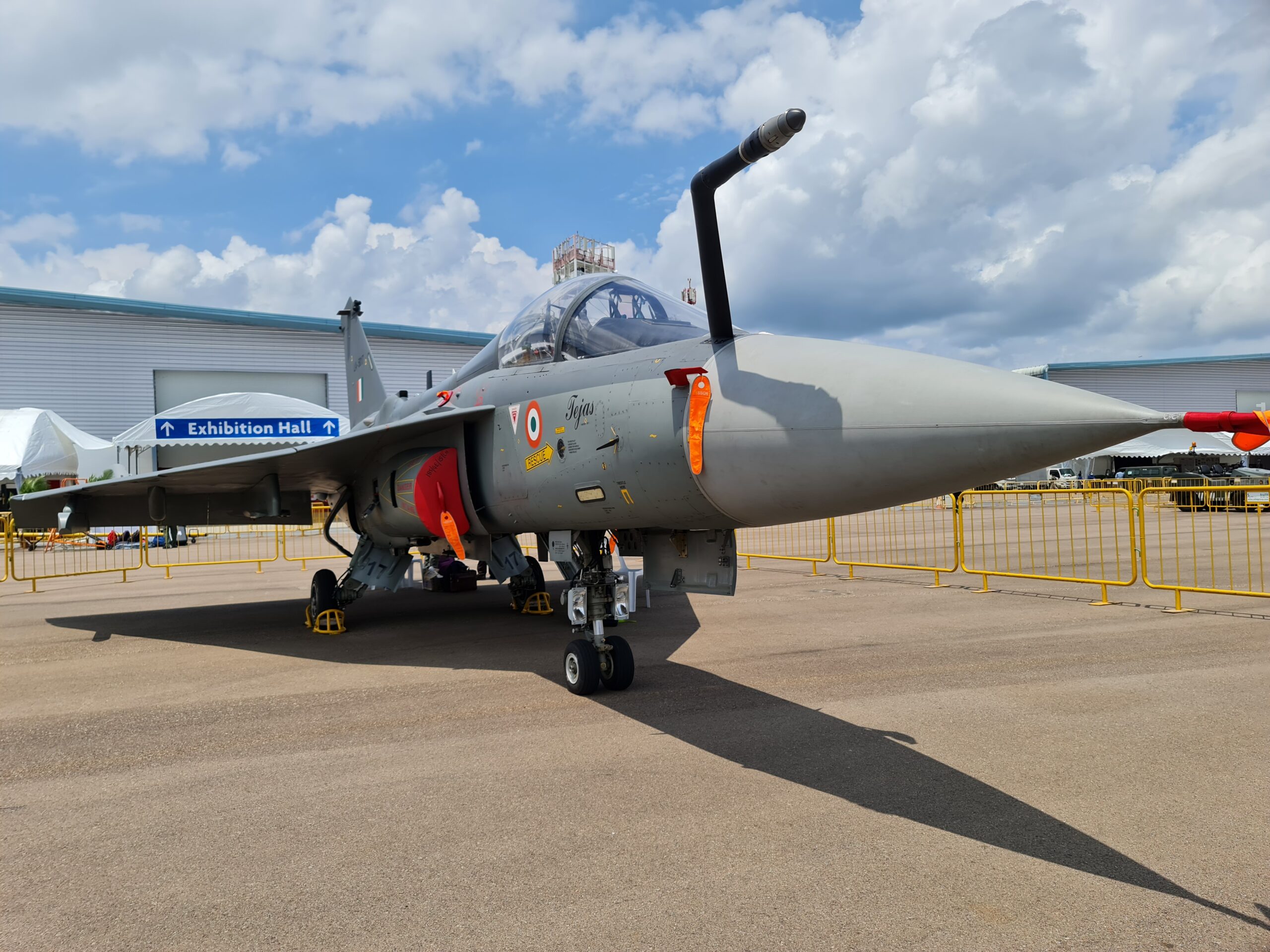Regional aerospace firms have taken the opportunity at the Singapore Airshow 2022, which has emerged as the largest event of its kind to be held in Southeast Asia since the onset of the Covid-19 pandemic, to push its single-engine light combat and multirole aircraft with an eye on regional opportunities.
Aviation Industry Corporation of China
To the surprise of many, state-owned aerospace and defence prime Aviation Industry Corporation of China (AVIC) made its first “comprehensive” exhibition appearance outside of the mainland, which is especially noteworthy considering the strict lockdown protocols still in force back home.
AVIC’s considerable pavilion displayed a wide variety of military aircraft models, including the export-oriented Chengdu/Pakistan Aeronautical Complex JF-17 single-seat and JF-17B twin-seat fighters, the Hongdu L-15 advanced trainer, the Changhe Z-10 attack and Z-19E reconnaissance helicopters. The company also highlighted its key Wing Loong family of armed reconnaissance unmanned aircraft.
An AVIC representative told AMR that the company’s broad combat aircraft portfolio, which spans trainers to advanced multirole combat aircraft, will enable the company to meet any regional training and air defence requirements. In particular, the representative noted that the latest Block 3 variant of the JF-17 features an indigenous advanced active electronically scanned array (AESA) radar as well as “advanced” electronic countermeasure systems, avionics, and beyond-visual-range missiles.
The representative was unable to disclose details of any ongoing regional programmes, but said AVIC is “actively engaging air forces and like-minded industry partners to address any conceivable need”.
Hindustan Aeronautics Limited
Meanwhile, the Indian Air Force (IAF) showcased its Tejas Light Combat Aircraft (LCA) in Singapore for the first time to support India’s efforts to position the aircraft for existing and emerging regional requirements.
The service dispatched three of the Hindustan Aeronautics Limited (HAL)-made aircraft to the airshow, with one example placed on static display accompanied by industry and government officials.
The delegation asserted to AMR that the Tejas is a proven aircraft with a wide range of capabilities that enable it to perform well in the hot and humid conditions in Southeast Asia.

According to specifications provided , the Tejas LCA has a combat weight of 13,330kg with a length and wingspan of 13.4m and 8.2m, respectively. The aircraft is powered by a General Electric F404-GE-IN20 turbofan which enables it to operate at altitudes of up to 50,000ft.
The Tejas LCA is being offered for the Royal Malaysian Air Force (RMAF)’s Light Combat Aircraft/Fighter Lead-In-Trainer (LCA/FLIT) programme announced in June 2021, which calls for a total of 18 newbuild aircraft to replace the service’s fleet of Aermacchi MB-339CM jet trainers that are already grounded, as well as its BAE Systems Hawk Mk 108 twin-seat and Mk 208 single-seat light attack aircraft. The effort is one of the key initiatives being pursued under the country’s Capability Development Plan 2055.
Korea Aerospace Industries
Korea Aerospace Industries (KAI) also took the opportunity at the airshow to highlight its latest range of fixed and rotary wing aircraft.
Besides its in-development KF-21 Boramae multirole combat aircraft, the company is also pushing its T-50 Golden Eagle advanced jet trainer. The latter, which is already in service with the Indonesian, Iraqi, Philippine, and South Korean air forces, is also a contender in Malaysia’s LCA/FLIT programme.

KAI asserted that the aircraft can be easily reconfigured for both light fighter and lead-in trainer mission roles with minimal down times, and is comparatively cheaper to operate compared with other aircraft in its class.
Like AVIC, KAI has proposed partnerships with local industry players to support technology transfer, a move that is clearly aimed to gain favour with decision makers.
By Jr Ng













